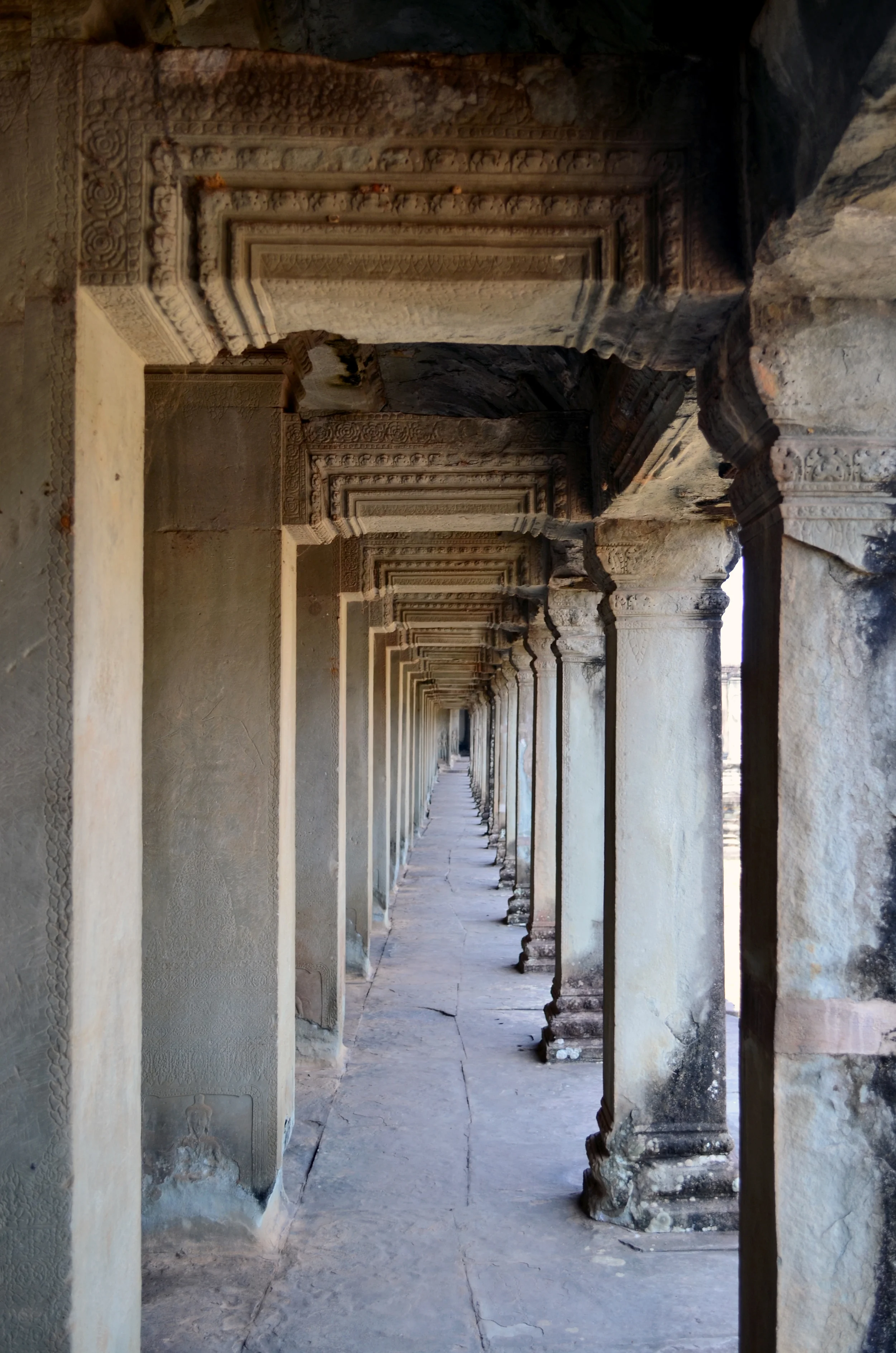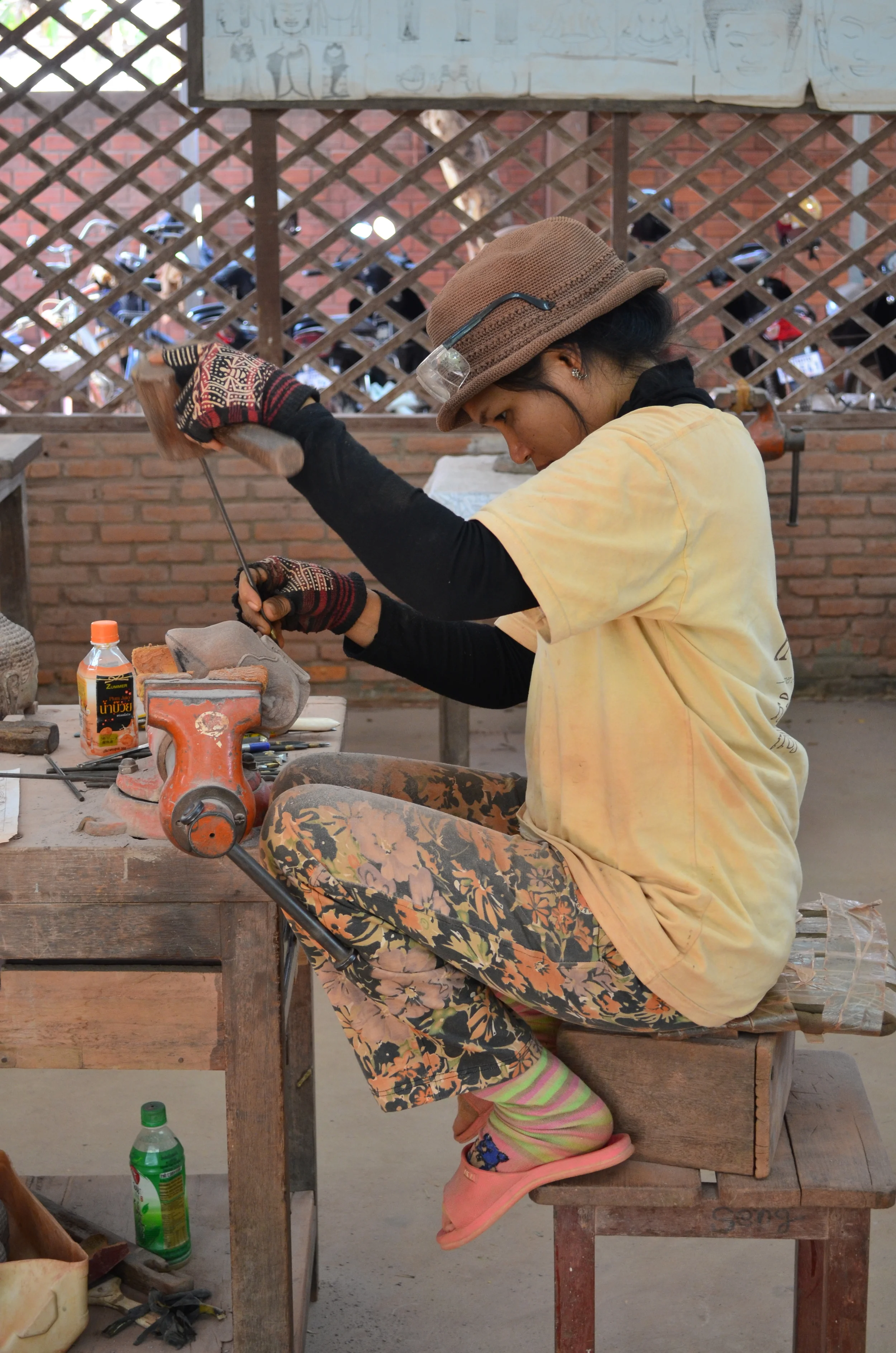Angkor What?!
Angkor Wat, the largest religious temple in the world.
Greatest Moment: Walking through Ta Prohm and witnessing one of the greatest relationships of nature and mankind. The trees and their roots became as a part of the roof and walls as the stone that was its initial foundation. It was so beautiful to witness and to feel the strong, intruding, and coarse surface of the roots and see its integration into the temples. The other great moment, as it is sometimes hard to just chose one, was walking around the bas-reliefs of Angkor Wat and standing in the shadow of the most magnificent pagodas.
Worst Moment: The clouds did dampen our sunrise visit to Angkor Wat, though its effect instead gave it a more peaceful display rather than a brilliant one. The transport and cost of activities around Siem Reap also proved to be disheartening, as our budget strictly forbade us from going to take a boat around Tonle Sap (the only river in the world that goes in reverse directions every year according to the melted snow of the Himalayan Mountains) or seeing the most ancient temples of the Roluos monuments.
Lesson Learned: The carvings, intricate details, and impossible talent, during a time that possessed less convenience than today, illustrates the amazing potential of human ability.
Cultural Insight: There is just too much to write for this category! We have learned so much history of Brahmanism and Hinduism through the stories depicted in the bas-reliefs of Angkor Wat. Kathy's favorite was the story of The Churning of the Ocean of Milk.
"The ocean of Milk is churned by gods and demons to generate amrta, the elixir of life. The purpose of the churning is to recover lost treasures such as the source of immortality, Laksmi the goddess of good fortune, the milk-white elephant of Indra, and the nymph of loveliness. The retrieval of these objects symbolizes prosperity." There are interventions between the gods to help in this process, and protect the elixir from complete consumption by the demons.
The temples of the Angkor period do more than just amaze. Their destruction, ruin, and remnants gives one the sense of an immeasurable greatness, and you look upon each site with equal disbelief. Aside from their beauty, they speak of a time that once was as they look down at our own delicate humanity, and one can meet their stare and trust that they will continue after our time. Immortality seems to be chiseled in every stone, as does a peaceful perception of its longevity. Angkor Wat and the surrounding temples are inspiring and essential to our own understanding of time, space, reality, and the possibility of another world of gods, dreams, and enlightenment.
DETAILS OF ANGKOR WAT





























